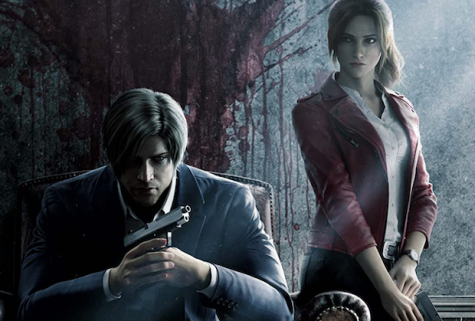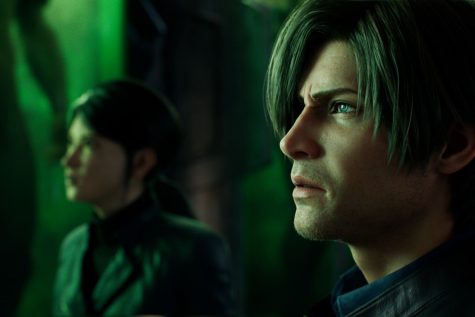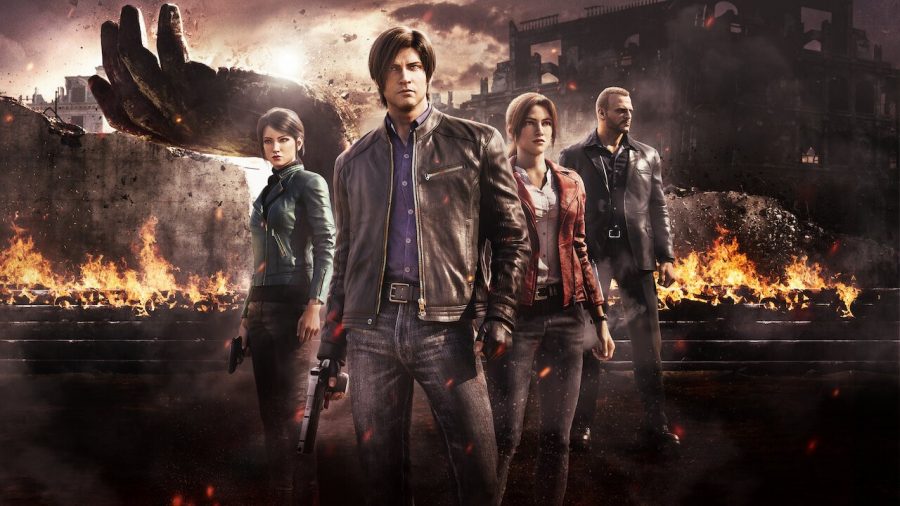I was filled with joy when I heard that the Japanese video game company, Capcom, collaborated with Netflix to develop a new anime series based on the Resident Evil video games. I experienced another level of excitement when I learned who the main characters are and when the story would occur in the timeline. Now that the latest video game-adapted anime series “Resident Evil: Infinite Darkness” has arrived on Netflix, is it a worthwhile experience for anime lovers or fans of the franchise?
After finishing “Resident Evil: Infinite Darkness,” it troubles me to say that this show was terrible and a missed opportunity to grab the attention of an anime audience who haven’t played the Resident Evil video games. Admittedly, I am new to anime, and my only background with it was when I watched “Dragon Ball Z” during Cartoon Network’s “Toonami” in the evenings after grade school. With that said, I don’t have much experience distinguishing how this series compares to other anime titles. But understanding the source material as a longtime Resident Evil fan, I can confidently say “Infinite Darkness” is a bore and a sloppy mess.

When pitching a Resident Evil anime series with veteran stars of the franchise Leon S. Kennedy and Claire Redfield, you need to have a solid story deserving of having their appearances. Unfortunately, the plot in “Resident Evil: Infinite Darkness” follows the traditional tropes fans can expect from Resident Evil: conspiracy, bioweapons, betrayal, and of course, zombies. Those concepts are familiar and have worked for a long time, but for “Infinite Darkness,” it’s all handled awkwardly. The approach in storytelling presented here falls in line with some of the worst entries in the franchise. It also does nothing for the audience unfamiliar with the characters and the key components of the timeline from previous “Resident Evil” titles.
The story takes place in 2006, two years after Leon rescued the president’s daughter in “Resident Evil 4” and before the events of “Resident Evil 5.” Leon has a gig working in the White House for the president and quickly has his skills put to the test. After an apparent hack and the following bio-weapon attack in the White House, the incidents instigate a conflict between America and China. We then find our other protagonist, Claire Redfield, as a human rights activist for the agency TerraSave. She comes across evidence which points to someone deploying additional bioweapons on the war-ravaged fictional country of Penamstan attached to China.
After the White House attack and discovering another biological threat, Leon and Claire’s paths intersect but only for a short-lived conversation. I wish I could say that the two title characters share a lot of screen time, but that would be a lie. Without giving anything away, don’t expect this story to be about Leon and Claire physically working together to solve a conspiracy of considerable magnitude. Throughout the four episodes, they both have a separate journey that does not culminate until it’s too late, and it was another missed opportunity for fans. Instead, there’s a lot of time spent introducing new characters, Jason, and Shen May, who were both equally forgettable. In addition, every story beat moves along at a questionable pace, making each episode feel as off as the last. As a result, the big moments that should matter end up falling flat and aren’t impactful. The recipe that makes up the plot in “Resident Evil: Infinite Darkness” is predictable, and the ideas are relatively dried out. The only aspect of the storytelling that shined was when the narrative connected to the video games.

So what happened with “Infinite Darkness?” The failure begins in its writing and spreads throughout all the episodes like wildfire. The writing in this series is atrocious and consists of cheesy one-liners that will make many people cringe. The editing wasn’t handled properly and felt rushed because of odd jump cuts and poor transitions. The director also didn’t manage the
flow of the scenes well, leaving the viewer with a sense of confusion most of the time.
Some of the positive takeaways from “Infinite Darkness” are the action scenes, voice acting, and computer-generated imagery. The CGI displayed in this animated series is fantastic at times, but there are many moments where it doesn’t look great on screen, especially during scenes with a lot of movement. It bewildered me because the cut scenes in the franchise’s newest game “Resident Evil: Village,” looked much better. On the other hand, I think they did an excellent job in the detail of the CGI work and the design choices of the characters. It felt authentic to Resident Evil in that sense but is a minor footnote regarding what’s wrong with this anime show.
“Resident Evil: Infinite Darkness” is a massive misfire for both Capcom and Netflix. But that doesn’t mean the release of Resident Evil content is slowing down anytime soon. There are two upcoming live-action adaptations, another series coming to Netflix, and one rebooted film. In the meantime, there’s no reason to add “Resident Evil: Infinite Darkness” to the Netflix list. Still, the best way to experience Resident Evil is through Capcom’s video games.

Rating: 1 out of 5 Spinnaker Sails.
________
For more information or news tips, or if you see an error in this story or have any compliments or concerns, contact editor@unfspinnaker.com.

















